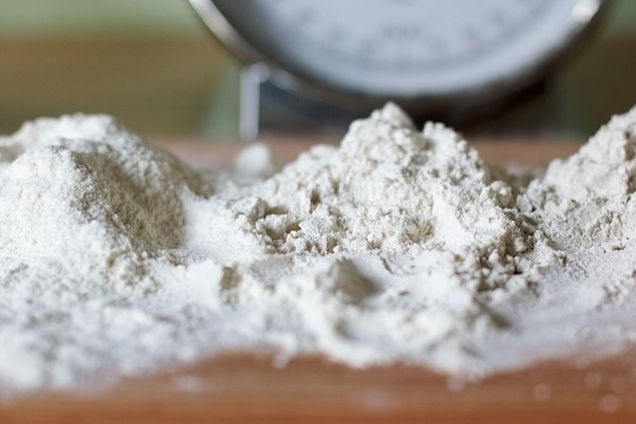
You’ve seen labels advertising “unbleached” flour. Few labels announce that their flour is “bleached,” but that’s exactly what happens to most white flour. It’s not just about the color, though—it’s an actual chemical change. Here’s how it works and why your cakes just wouldn’t taste the same without it.
Chlorine bleach, when applied to your laundry, reconfigures the green pigments of grass stains, the brown pigments of chocolate stains, and the red pigments of tomato sauce stains so that they are white. The same thing happens when finely-milled flour is exposed to chlorine gas—its pigments slowly get bleached white. But something else happens as well.
The oxidation breaks down starch and gluten protein in the bread dough. Long chains of gluten are what keep bread together, toughening it. Applying bleach to flour and destroying the gluten allows for delicate and soft-textured cakes. This is especially important in sponge cakes and cakes with a high sugar content. Whenever you want a light, airy, melt-in-your-mouth cake, you need to oxidize the flour somehow.
To be fair, bleaching isn’t the only way to get flour to oxidize. Expose flour to the air for long enough and it will oxidize to a certain extent on its own. Countries that outlaw the use of chlorine have other oxidizing agents that they use on their flour. As a last resort, bakers are told to put their flour in the microwave as a way to kill the gluten and make a better cake. It’s true that bleaching strips away a lot of flour’s nutritional properties, but nobody eats cake for the protein.
While we do like the look of white flour, from a materials science standpoint bleached, or at least thoroughly oxidized, flour is necessary to make a product with the right texture and structure. It’s not just about making a cake look pretty.
Source: io9 This Is How Bleached Flour Changes The Taste of Your Cakes